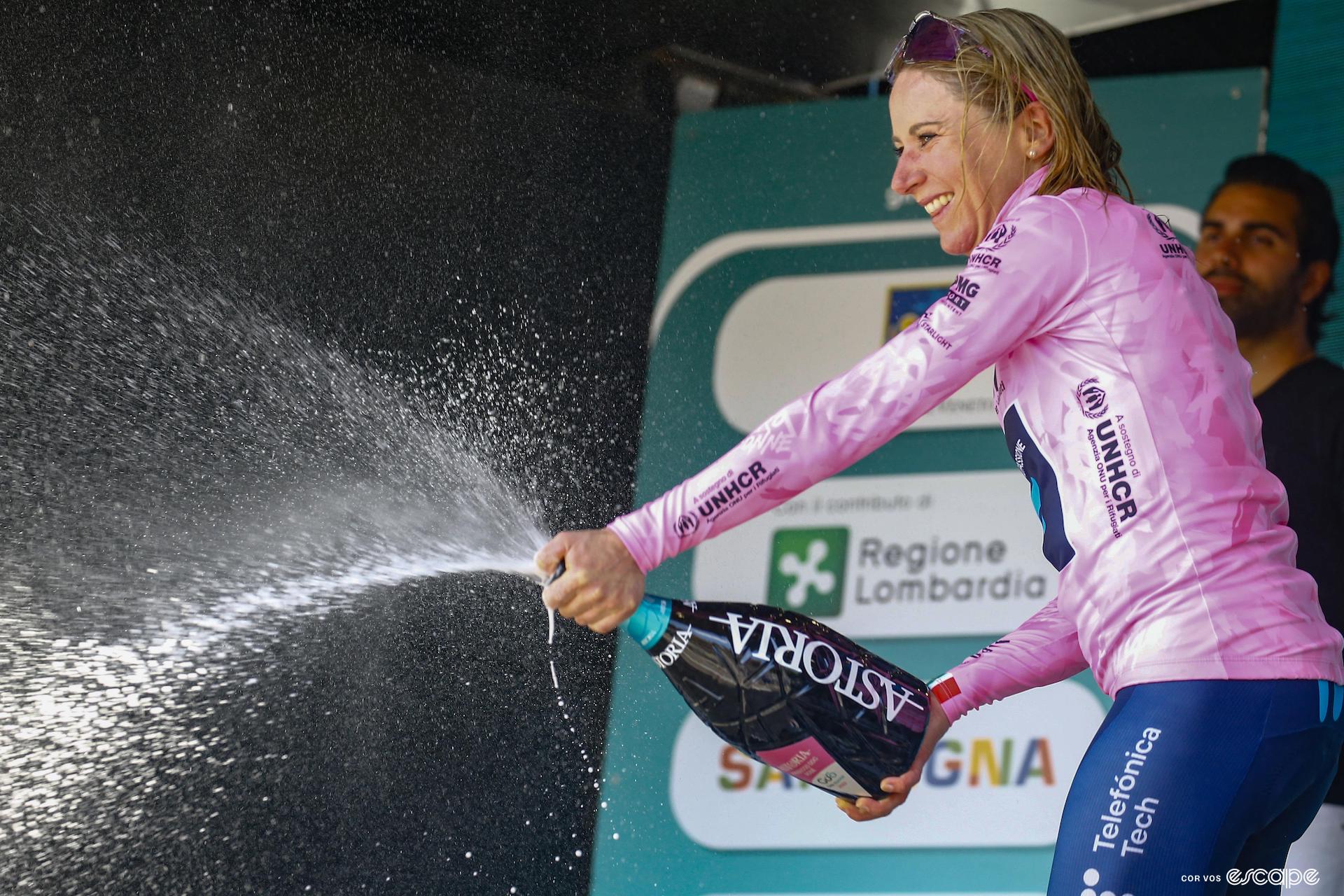On a very hot Sunday in Olbia, an age of women’s cycling came to a close as Annemiek van Vleuten rode across the finish line of her final Giro Donne. When asked her favourite memory from the Italian ‘Grand Tour’ the World Champion responded “all the years.” It’s been 13 years since her first Giro, and in that time the Dutchwoman has gone from just a member of the peloton to a member of the winning team, to the woman of the Giro, winning four editions in seven years.
Van Vleuten may not hold the record for the most Giro wins; that title belongs to Italian Fabiana Luperini, who won five, from 1995-1998 and again in 2008. But over the last seven years, when she claimed 16 stages to go with her quartet of titles, Van Vleuten has claimed the Giro Donne as her own.

The humble beginnings
It all started in 2009 when she was racing with the Dutch team DSB Bank-Netherland Bloeit. On that occasion, she finished 39th, 12:05 behind the winner Diana Ziliute. The following year, again racing for her home country, Van Vleuten showed her promise with a jump to seventh, 1:41 behind Judith Arndt. In 2011 Van Vleuten helped Marianne Vos ride to overall victory with Netherland Bloeit, finishing 75th herself, 1:51:59 down. It was her first taste of the pink jersey, seeing it on the shoulders of her teammate.
At that time early in her career, the Dutchwoman had her sights set on being a Classics rider. While riding alongside her friend Iris Slappendel in the 2010 Giro, Van Vleuten aired her concerns she would never be a good climber.
“At that [2010] Giro she was doing pretty ok in some stages, but in other stages not so much,” Slappendel told Escape Collective. “At that time she was also in a team where the sport director didn’t really believe that she would be a good climber or a stage racer.”
In those early years, Van Vleuten spent most of her energy in service of others, mainly Vos. She won races herself, for example, stage of La Route de France. When she signed for Rabobank in 2012 she was immediately overshadowed by her teammates, including Pauline Ferrand-Prevot.
“She became the Dutch national champion before [the 2012 Giro] but she didn’t have the national champion team kit on time, she only had one time trial suit in the Dutch colours so she was wearing that every day, and she had to wash it every night,” Slappendel recalls. “Maybe in that way, she was also ahead of her time, wearing a skin suit in a road race every day and having to stuff all her food in back pockets made from numbers.”
While a broken collarbone doomed her to a DNF (she continued to race for two stages but eventually went home), her winning ways started that season. In addition to her national title, Van Vleuten won stages at Festival Elsy Jacobs, Emakumeen Bira, Giro Toscana, and various one-day races as well.
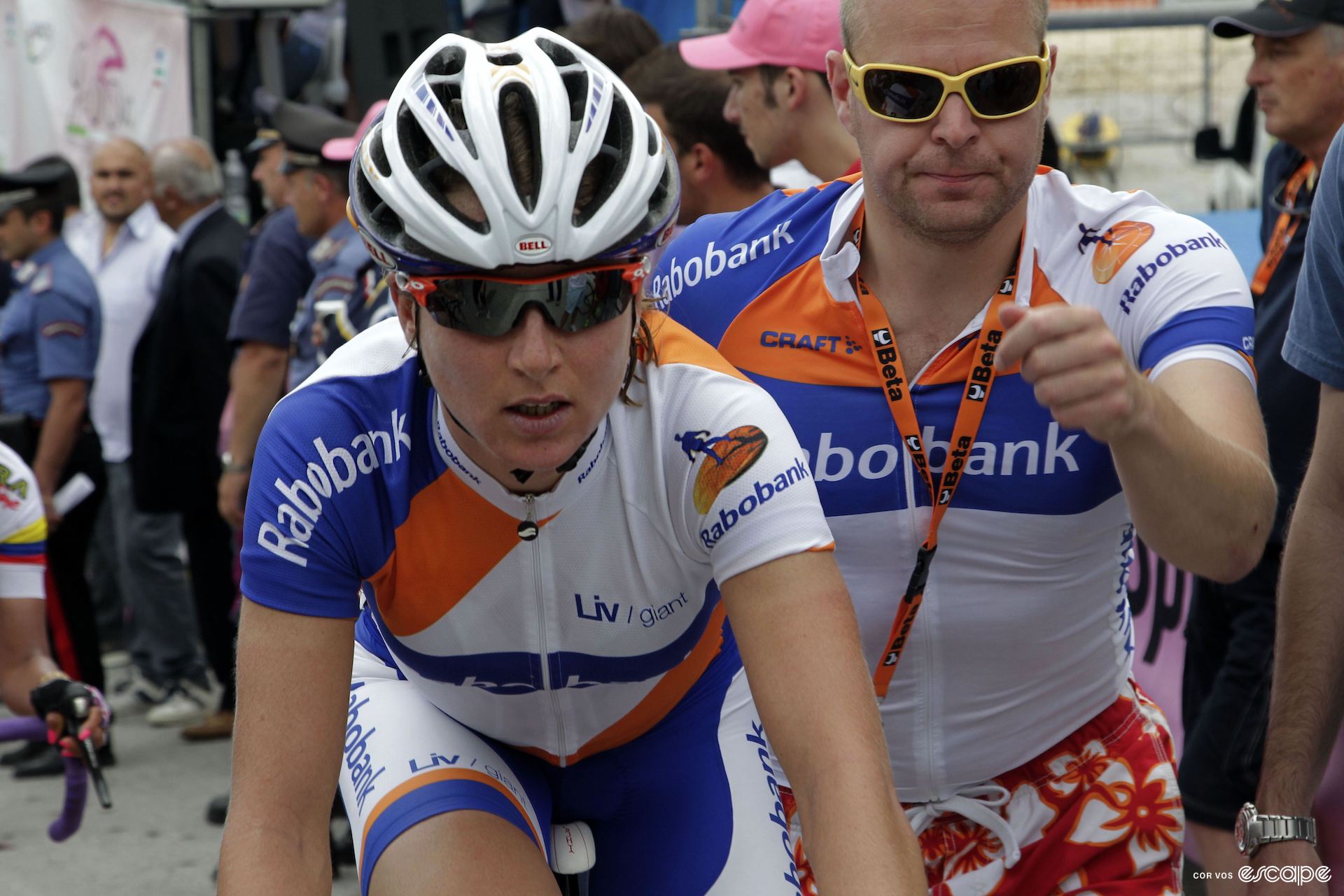
But her Giro story really started to pick up steam in 2014. After winning the opening prologue by just one second over her teammate Vos, Van Vleuten pulled on her first Giro pink jersey. A few days later she won her second stage, a 125 km race from Caserta to San Donato Val di Comino ahead of Alé Cipollini’s Elena Berlato. By the end of the race she was 7:16 behind Vos in the overall, but the seed was set.
The years that followed brought mixed results at the Giro for Van Vleuten. Part of that was due to iliac artery endofibrosis, a painful condition that impedes the ability to produce power in one or both legs. She would later get surgery to correct it.
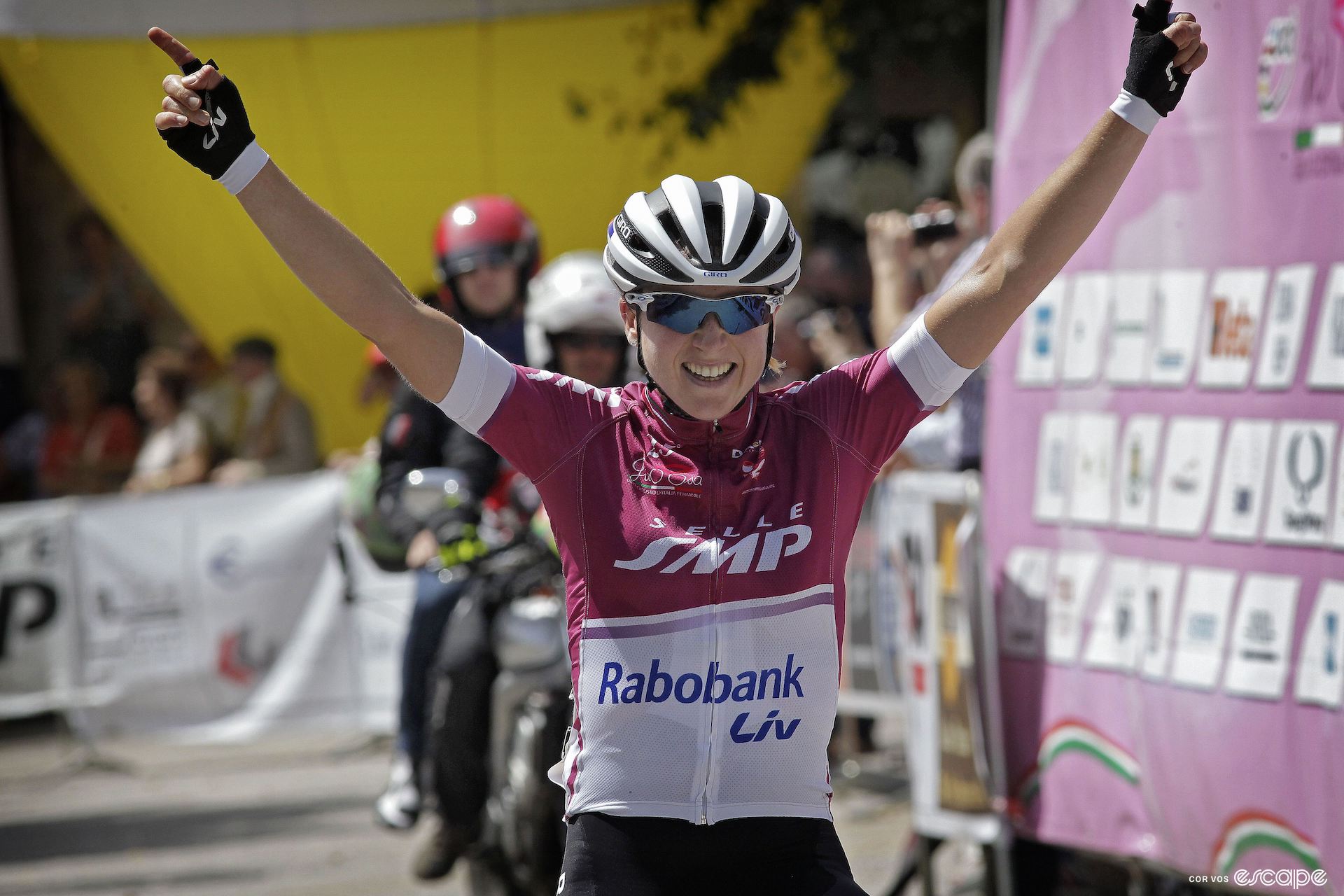
A champion begins her rise
Even though she finished 35th in 2015 while riding for Bigla Pro Cycling Team (she still won the first stage in 2015 and wore the pink jersey for a day), Van Vleuten started to adapt her style. The goal was an Olympic gold medal in Rio de Janeiro, and she almost got it. She climbed with the best climber in the world at the time and two-time Giro winner Mara Abbott, but crashed heavily on the descent to the line. Her climbing ability from that day onward has been legendary and she only got better over the years that followed.
The best move of Van Vleuten’s career was to Orica-AIS in 2016. “It was great we could do so well as a team but it was also really challenging to be with so many top riders in one team,” Slappendel said of her teammate’s time at Rabobank. “I think she made a wise decision to leave, and especially when she moved to Orica-AIS.”
It was at the 2017 Giro with Orica-AIS, this time riding against former teammate Vos, that brought the first signs that the Age of Annemiek was about to begin. The race started poorly for Van Vleuten when Orica-Scott lost 22 seconds to rival Van der Breggen’s Boels-Dolmans team in the opening team time trial.
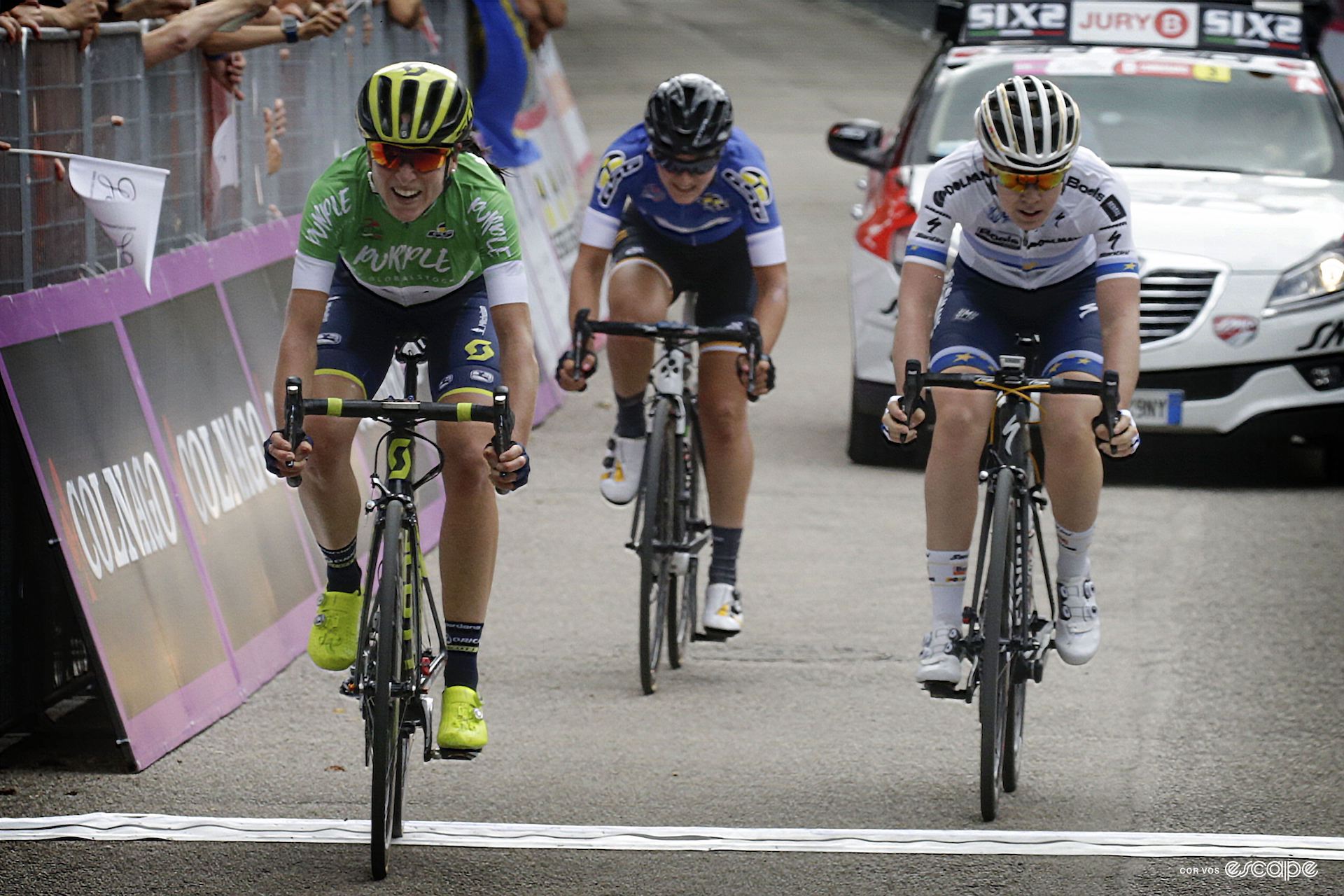
That year it was a battle between Van der Breggen, Italian Elisa Longo Borghini, and Van Vleuten. On the second stage, which finished in the mountainous part of Friuli-Venezia Giulia, Van Vleuten took the win but couldn’t drop Van der Breggen to take pink. On the fourth stage, Van Vleuten lost nearly two minutes thanks to crosswinds and the efforts of both Longo Borghini and Van der Breggen’s teams.

Things started looking up for Van Vleuten when she won the fifth stage individual time trial by 41 seconds over Van der Breggen, which was enough to move her back onto the overall podium after the crosswind stage but not enough to pass Longo Borghini in second. Over the next five stages, Van Vleuten couldn’t find the 1:39 to win her first Giro, but it was only a matter of time.
Finally at the top
In 2018, with Van der Breggen absent, Van Vleuten took her first overall title and three stages to boot, beating Ashleigh Moolman Pasio by 4:12. In 2019 she got her revenge directly on Van der Breggen, taking the overall lead from her Dutch rival by 3:45, along with two stages.
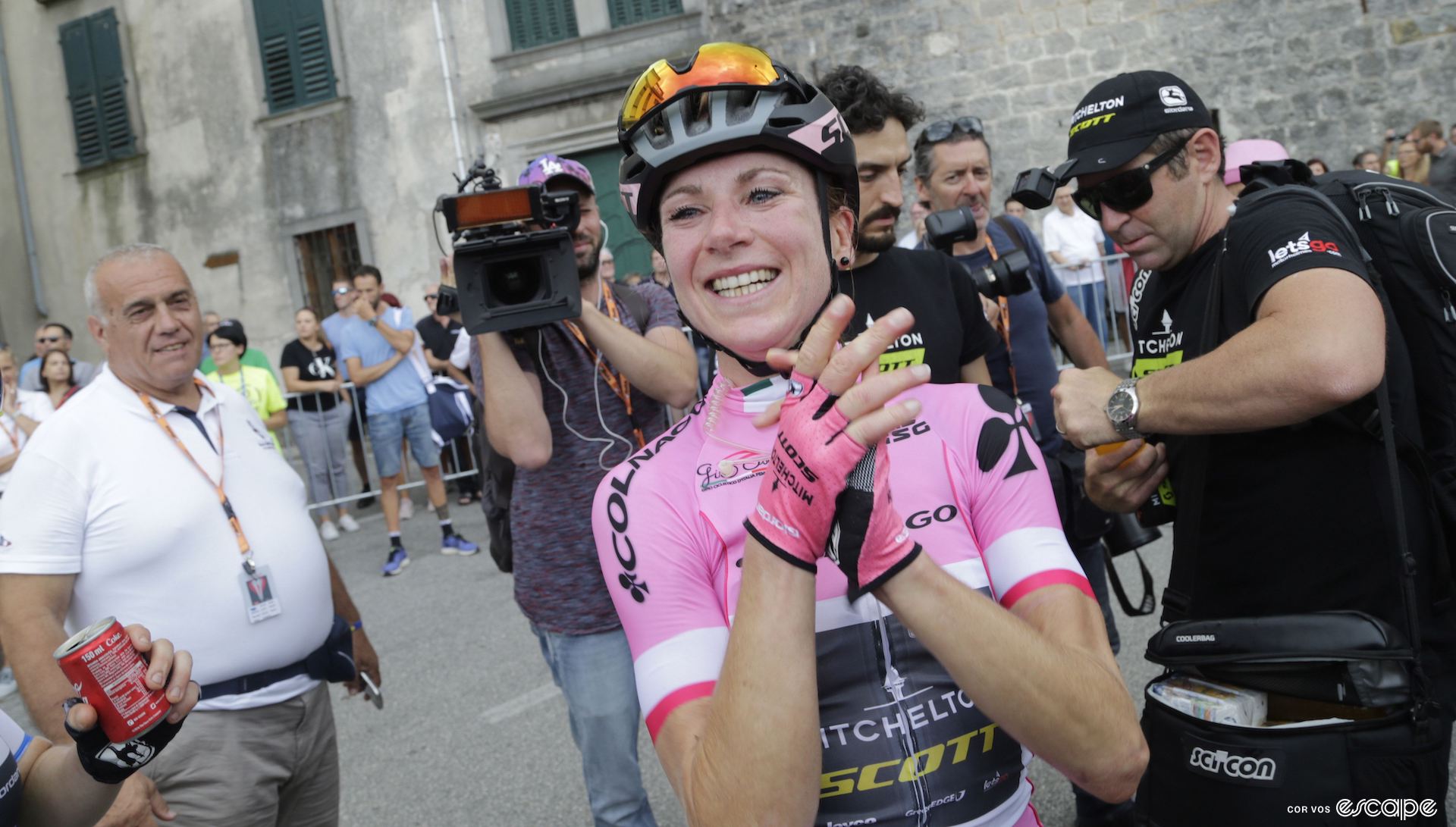
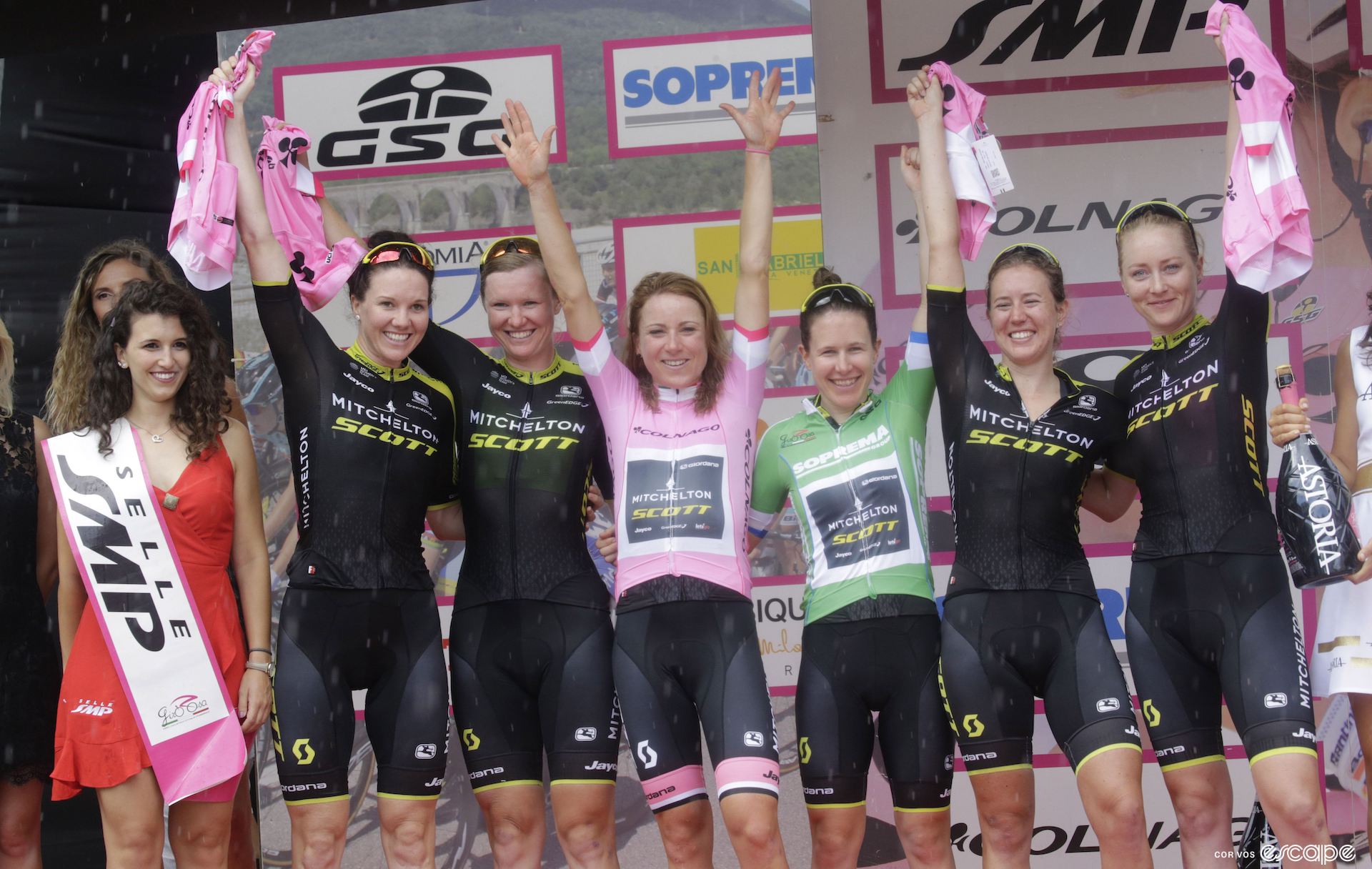
“In stage races, she became a better and better climber, and she should have all the credit for that herself,” Slappendel said. “She had multiple operations on her iliac artery, and when that didn’t bother her anymore she had a much better chance to do good in GC.”
By 2020 Van Vleuten was the out-and-out favourite to win the Giro, even more so when she won the second stage over Van der Breggen and took the leader’s jersey. But a crash late in the seventh stage took her out of the race while in pink.
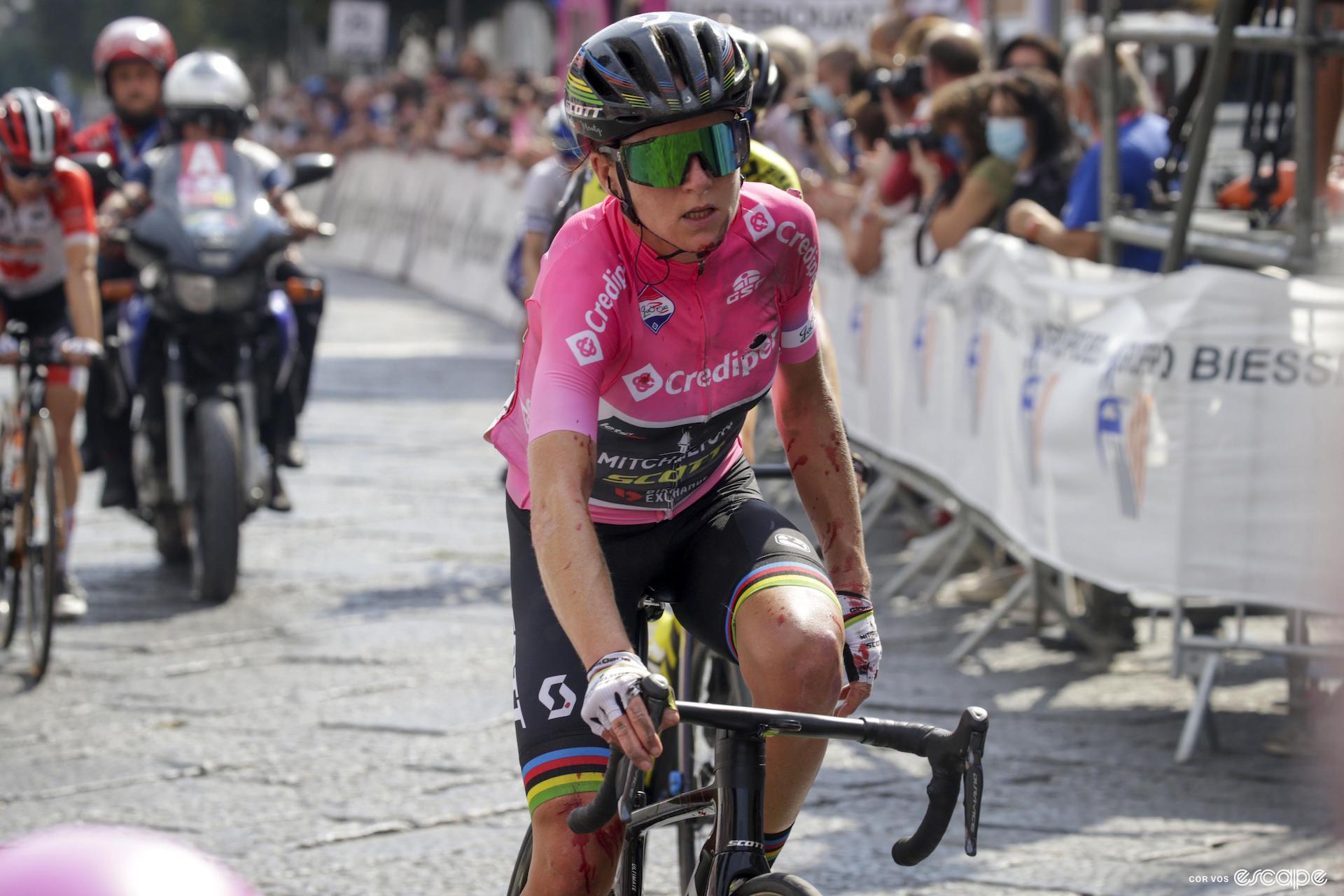
Just like in 2016, Van Vleuten skipped the Giro in 2021 to prepare for the postponed Olympic Games in Tokyo, but when she returned to the Italian tour in 2022 for Movistar she won it easily, with two stage wins and a nearly two-minute advantage over Marta Cavalli to cap a fantastic year with victories at Het Nieuwsblad, Liège-Bastogne-Liège, the World Road Championship, and both the inaugural Tour de France Femmes and the Ceratizit Challenge by La Vuelta, giving her a clean sweep of all three “Grand Tours.”

“These last few years I’ve been following Annemiek from a bit more distance, not anymore as a teammate but as a commentator on Eurosport, as a fan and as a friend, of course,” Slappendel said. “I have a lot of memories from Annemiek as a teammate and I’ve seen her suffering and being in pain a lot from up close, and for me, that’s always been a mixed emotion as well.
“I admire her extreme determination. I don’t know a ton of athletes that are able to put themselves into that much pain, but it also really hurts to see your friend or teammate hurt so much, especially with her iliac artery. It’s not just going really deep in training, it’s seeing someone in a lot of physical pain. For me, I have a lot of respect that she believed in the fact that she could continue her career and come back after those operations and maybe that’s one of her biggest achievements.”
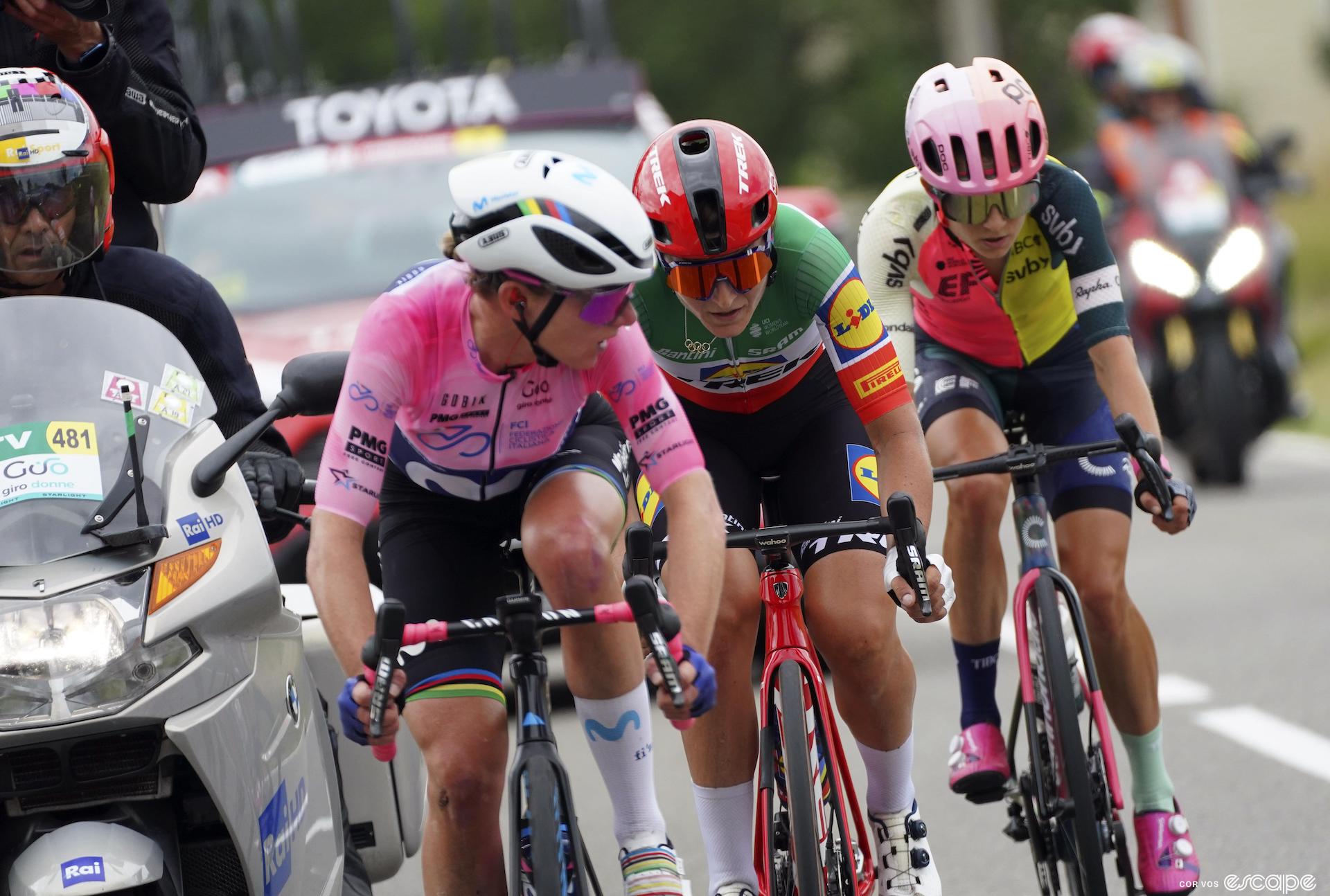
The final chapter, and a new beginning
Enter 2023, and it wasn’t looking like Van Vleuten would dominate her favourite race like she had in the past four years. She won La Vuelta Femenina again, but only narrowly, and lost out on both uphill finishes. All spring, she wasn’t looking like the climber the world had grown accustomed to seeing. But that just goes to show that she can never be counted out. Already in the first stage at the Giro she had a fierce look in her eye, and had the prologue not been cancelled she would have been set up before the second stage for success. As it happened, she ended up taking the first pink jersey of the race anyway, and she held it for the rest of the week while also winning two more stages.
She was without question the strongest rider in the race, at times even playing with the rest of the peloton like a cat with yarn.
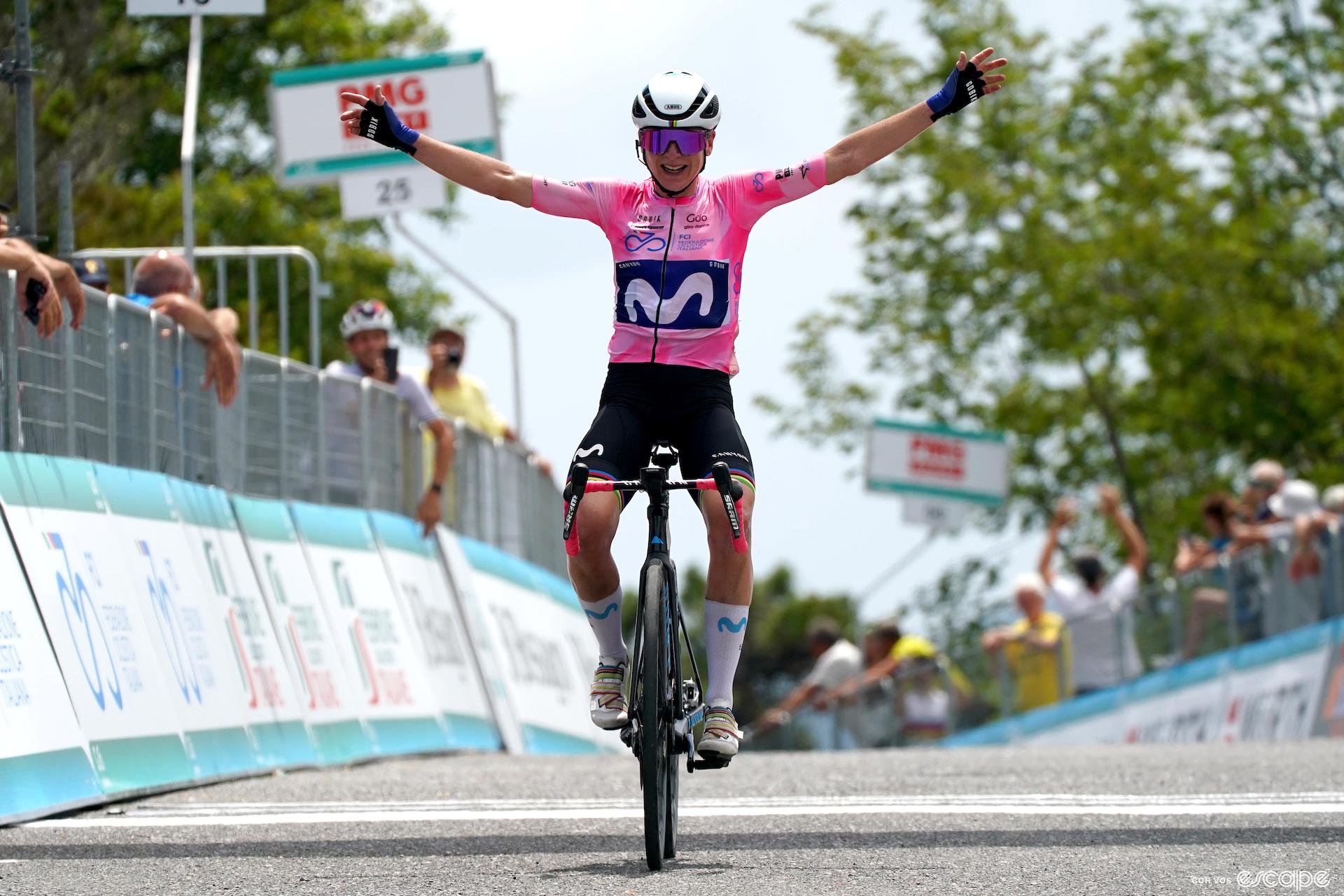
When she crossed the line for a final time, her last day in pink, there was a blanket of uncertainty that covered women’s cycling. For the last seven years, Van Vleuten has made the race hers, winning four (almost five if you consider her nearly two-minute lead before crashing out in 2020) of the six editions she raced. It’s been her favourite race since 2010 and it was easy to see that in the way she approached it year on year. In her quest to take four Giro titles, Van Vleuten transformed women’s cycling. She made altitude training not just a tool but a way of life. She forced the peloton to step up to her level, creating new rivals in Demi Vollering, Marta Cavalli, and now Gaia Realini.
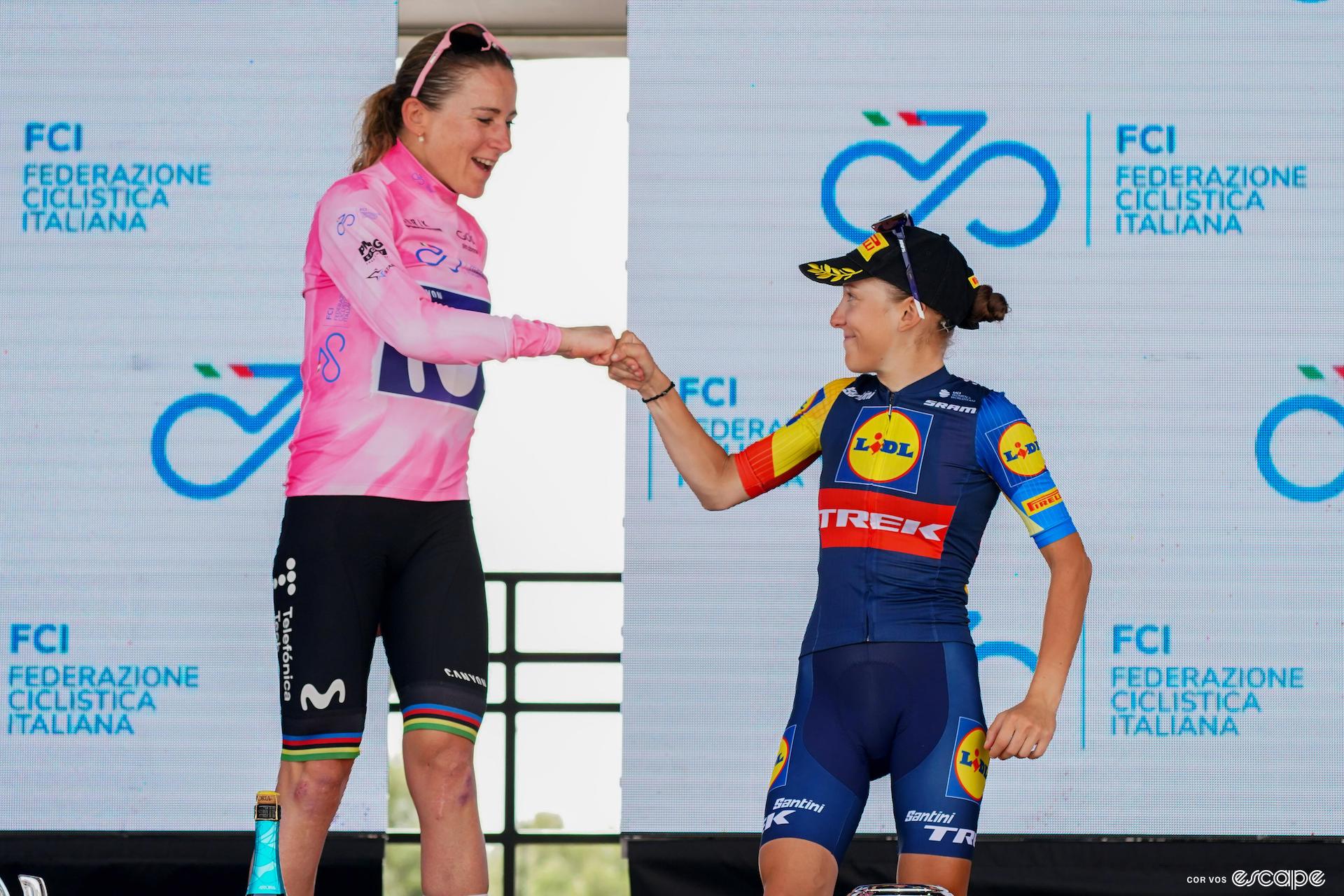
“I saw how much she enjoys it all, all the preparation, making plans, making tactical plans, motivating her teammates and making them part of her success,” says Slappendel. “She has a life and interests outside of cycling but she’s also very capable of, as we say in the Netherlands, putting the blinders on and keeping focus on one goal, and I think that’s one of the reasons she does so well at the Giro.
“This is a race where it’s easy to get distracted by issues, unpredictable things that can happen, long transfers, shit hotels, good hotels, changes in the course, weather, etc. The Giro is one big chaotic race. And you can have all these things take up your energy or you can have yourself not be bothered by it and only make sure you put your energy into things you can influence, and that is a skill Annemiek is a master of, and therefore she does so well at the Giro.”
At the end of her 17-year career Van Vleuten has won 16 stages of the Giro Donne and worn the pink jersey during 33 stages. She is the queen of the race, and the 2024 edition will start with a weird feeling, like you know you left something behind but you can’t put your finger on what. As the Giro says goodbye to the woman who changed women’s cycling forever we will also look ahead to a new generation of cycling greats and a new challenge for the peloton. Perhaps the next pink jersey will go to an Italian for the first time since Luperini won in 2008. Both Realini and Cavalli have come close and will only get better in the years to come, and Longo Borghini of course.
Until then it’s Van Vleuten’s world, we’re just living in it.
Did we do a good job with this story?
